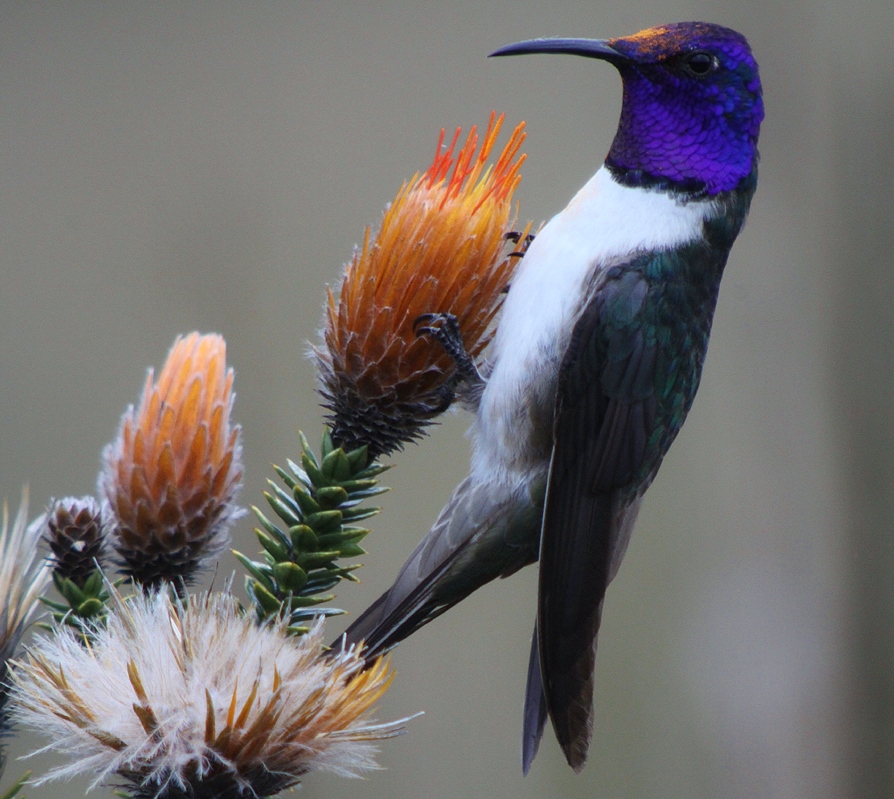 |
| (Photo from 10,000 Birds) |
Common name:
Ecuadorian hillstar (en); beija-flor-de-Chimborazo (pt); colibri du Chimborazo (fr); colibrí del Chimborazo (es); Ecuador-Andenkolibri (de)
Taxonomy:
Order Apodiformes
Family Trochilidae
Range:
This species is found along the Andes mountain range, in Ecuador and southern Colombia.
Size:
These birds are 11,5-13 cm long and weigh 7,5-8 g.
Habitat:
The Ecuadorian hillstar is found in high-altitude grasslands and pastures, and sometimes also in humid rocky slopes, on volcanic mountains up to the snowline. They occur at altitudes of 3.500-5.200 m.
Diet:
They feed on the nectar of various flowers, particularly the orange flowers of the Chuquiragua scrub, but also take several insects and spiders.
Breeding:
Ecuadorian hillstars can breed all year round, with a peak in October-February. The nest is a small cup made of moss, roots, dry grass, feathers, rabbit fur and vegetable down, typically placed in a cave, gully or crevice in a steep ravine, often below an overhang. The nest may also be suspended from small ferns or built in trees such as Polypelis, up to 6 m above the ground. The female lays 2 white eggs, which she incubates alone for 14-19 days. The chicks are fed by both parents and fledge 3-4 weeks after hatching.
Conservation:
IUCN status – LC (Least Concern)
This species has a restricted breeding range and is described as common and patchily distributed. The population is suspected to be stable in the absence of evidence for any declines or substantial threats.







